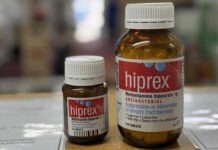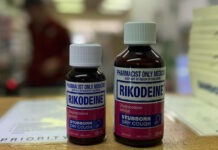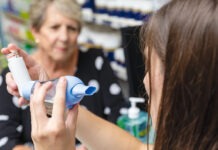Case scenario
Thomas, 22, presents to your pharmacy with a prescription for doxycycline for a bacterial infection. They have fair skin, work as a builder and are a keen surfer. You discuss with them the risk of sunburn with doxycycline, but they say they do not want to use sunscreen every day because they heard it would lower their vitamin D levels.
Learning objectivesAfter reading this article, pharmacists should be able to:
Competency standards (2016) addressed: 1.1, 1.4, 1.5, 2.2, 3.1, 3.5 Accreditation number: CAP2510SYPVS Accreditation expiry: 31/09/2028 |
Already read the CPD in the journal? Scroll to the bottom to SUBMIT ANSWERS.
Introduction
The sun produces ultraviolet (UV) radiation, which spans a section of the electromagnetic spectrum defined as 100–400 nm in wavelength, with subdivisions into UVA (320–400 nm), UVB (290–320 nm) and UVC (100–290 nm).1 While there are many sources of UV radiation, the major source for human exposure is the sun.2
UVB radiation is needed for the body to convert vitamin D to its active form.3 However, it can damage DNA, leading to photo-aging of the skin, eye issues such as cortical cataracts and skin cancers.4–6
Australia has the highes
THIS IS A CPD ARTICLE. YOU NEED TO BE A PSA MEMBER AND LOGGED IN TO READ MORE.




 Hannah Knowles MPS with David Batt MP, Member for Hinkler (Qld)[/caption]
Hannah Knowles MPS with David Batt MP, Member for Hinkler (Qld)[/caption]
 Anna Theophilos MPS with David Batt MP, Member for Hinkler (Qld)[/caption]
Drawing on 17 years’ experience, Theophilos highlighted the breadth of community pharmacy services she provides, anchored by immunisation.
Using her ‘spin-to-win’ wheel, Anna highlighted the inequity experienced by patients across Australia, with regulations preventing pharmacist immunisers being able to fully support the immunisation needs of the communities they serve.
“I hope they can see it’s common sense that all pharmacists, regardless of where you practice, can vaccinate according to the Australian Immunisation Handbook. All Australians deserve the same access to vaccinations regardless of where they live.
Anna Theophilos MPS with David Batt MP, Member for Hinkler (Qld)[/caption]
Drawing on 17 years’ experience, Theophilos highlighted the breadth of community pharmacy services she provides, anchored by immunisation.
Using her ‘spin-to-win’ wheel, Anna highlighted the inequity experienced by patients across Australia, with regulations preventing pharmacist immunisers being able to fully support the immunisation needs of the communities they serve.
“I hope they can see it’s common sense that all pharmacists, regardless of where you practice, can vaccinate according to the Australian Immunisation Handbook. All Australians deserve the same access to vaccinations regardless of where they live.


 David Peachey MPS
David Peachey MPS


 Professor Sarah Blunden[/caption]
Professor Sarah Blunden[/caption]








